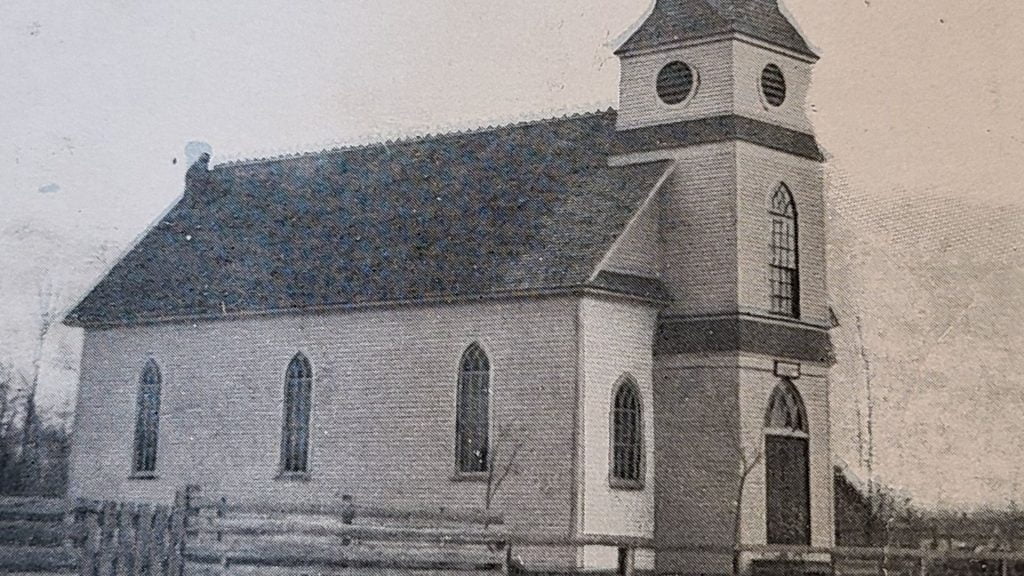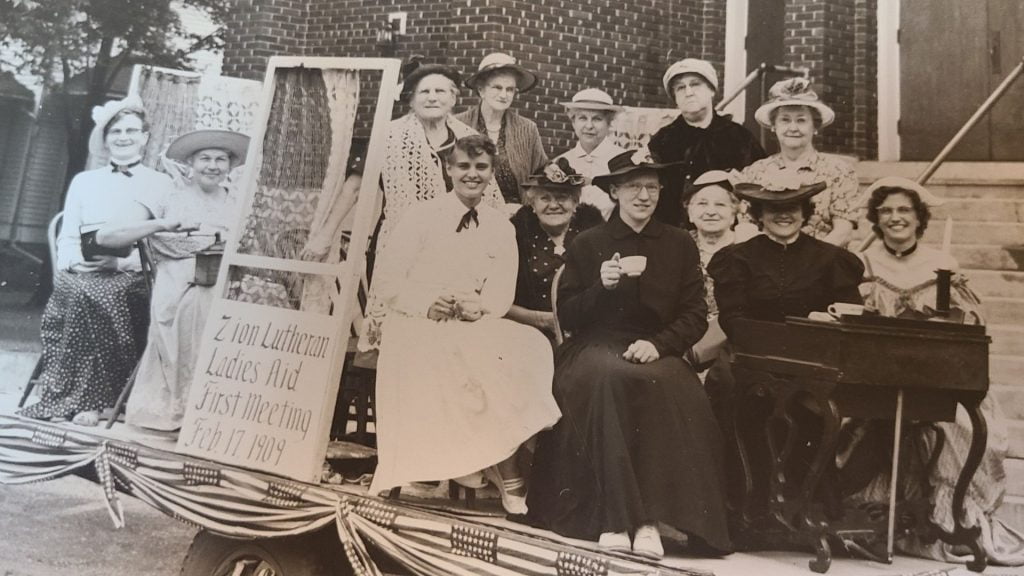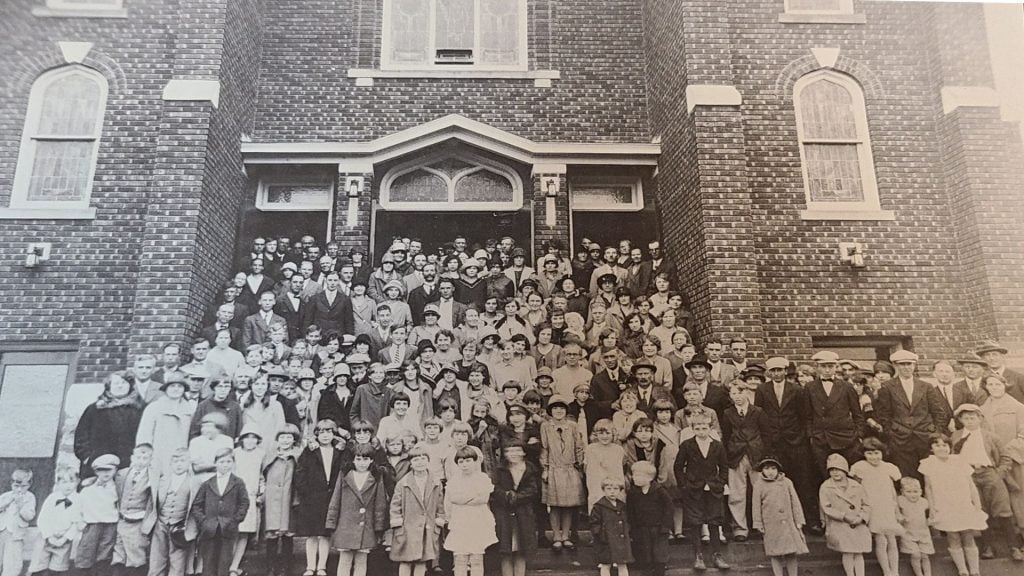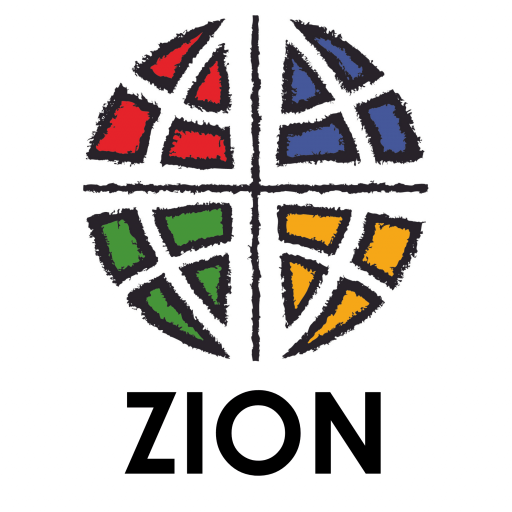History of Zion Stratford
A deep and rich history of loving the Lord and loving the neighbor throughout the generations.
Zion Lutheran’s history is one of intergenerational and community care.
It is a history that expands Wisconsin.
The year is 1898. Stratford is a small lumbering town on the Big Eau Pleine River in Central Wisconsin. Surrounded by beautiful virgin timber, the Connor Brothers established a sawmill, and a planing and heading mill that operates day and night. Many of the Connor Company’s lumber laborers live in Connor Company housing, and are paid in Connor Company “script,” redeemable only at the Connor Company Store. A boarding house and a tavern or two complete the town.
Within the community, a handful of residents of German descent with Lutheran backgrounds begin to realize their need for a place to worship and hear the Word of God. Through the efforts of seven men and one woman, and the leadership of traveling missionary Pastor R Imms, Zion Lutheran Church is organized! Services are held in their homes.
Missionary Pastors
Early in 1899, Missionary Imms left the territory and services were conducted by a neighboring minister every other week. Interest seemed to wane as members abandoned the group. The pastor became discouraged with the struggling congregation and discontinued his bi-weekly services in Stratford.

In April of 1901, a member of the founding group, Mr. Henry Schiffer, was unwilling to give up and called a meeting of the remaining members and others who had expressed interest. He convinced them of the necessity for a church and a resident pastor in order for Zion Lutheran to survive as a congregation. At that very meeting, they decided to build a church! The Connor Company purchased a piece of property for $55.00 and donated it the congregation. The cornerstone was laid that August, and the building was dedicated on November 3, 1901. One year later, on November 24, 1902, Zion Lutheran Church was incorporated.
During these early years, a variety of short-term ministers led the services until in 1907, Rev. Karl Schmalz of the Town of Wien, despite already serving three parishes, willingly took on the added responsibility of the Stratford congregation. He held a service every other week and taught Bible classes during the summer. Later in 1907, the Town of Wien church united with Zion Lutheran – Stratford. In 1910, the Fenwood Lutheran congregation requested that they also be added. The services were conducted in the German language, with German-style seating — men on the left, women on the right.

1909 — The Zion Lutheran Ladies Aid Society is established with sixteen charter members. Through church dinners, bazaars, and ice cream socials, many of the financial needs of the church were fulfilled by the Ladies Aid Society.
1912 — The congregation boasts 34 members who discuss their wish to call a resident pastor. These discussions also materialize into plans for a school and parish house. Theophil Diemer, then a student from St. Paul Seminary was hired for the summer to teach classes and conduct services. In October of 1913, the school and a neighboring house to be used as a parsonage were dedicated. Soon after, Rev. Diemer graduated, was ordained, and then installed as the first resident pastor of Zion Lutheran Church.
A new modern parsonage was built in 1916 to better serve Rev. Diemer and his growing family. The cost of that parsonage is recorded as $2,829.64.
Palm Sunday Lightening Strike
On April 16, 1922, the night before Palm Sunday, a lightning strike demolishes the church steeple and a sizable portion of the church interior. As the congregation had been steadily growing and was “bursting at the seams”, the decision was made to construct a new brick church building. The successful bidder for the project, Krasin Brothers of Marshfield, built the church for $21,790. The building was dedicated in November of 1924. Each Sunday, a German service and an English service were conducted.

Sawmill Closure
Times were tough when, in 1926, the Connor Company dismantled the sawmill leaving many in the area unemployed. The market crash of 1929 added to the congregation’s difficulty in making the debt payment each year. Through much sacrifice and determination, the full debt payment was made each year until the final payment was made in August of 1943. The congregation had grown to 260 members at that point in time.
In October 1953, after serving Zion Lutheran for 40 years, Rev. Diemer retired with nearly 400 members wishing him and Mrs. Diemer farewell. Since then, only a handful of pastors have served at Zion Lutheran.

Other notable dates in Zion Lutheran history:
1919 Zion’s “young people’s society” gathers and establishes as the Luther League.
1924 The first pipe organ is purchased by the Luther League for $1,500.
1958 New pipe organ is purchased.
1959 Interior of the church is redecorated.
1963 Parish education wing is added to the east end of the church building. The church library is established.
1974 West church entrance is enclosed, narthex is expanded, and a pastor’s study, elevator and lounge are added.
1989 Fenwood congregation is dissolved.
2008 Building addition — new offices and conference room, large multi-purpose family center and kitchen, gathering area, meditation garden.
Zion Lutheran Ministers:
1913 – 1953 Rev. Theophil Diemer
1953 – 1956 Rev. Arlin Adams
1956 – 1964 Rev. Carl Schulte
1965 – 1969 Rev. John Albrecht
1969 – 1981 Rev. Donald L. Gauerke
1981 – 1986 Rev. Jon Becker
1987 – 1997 Rev. Dan Alexander
1998 – 2021 Rev. Susan Eidahl
2022 – Present Rev. Amy Heinz
